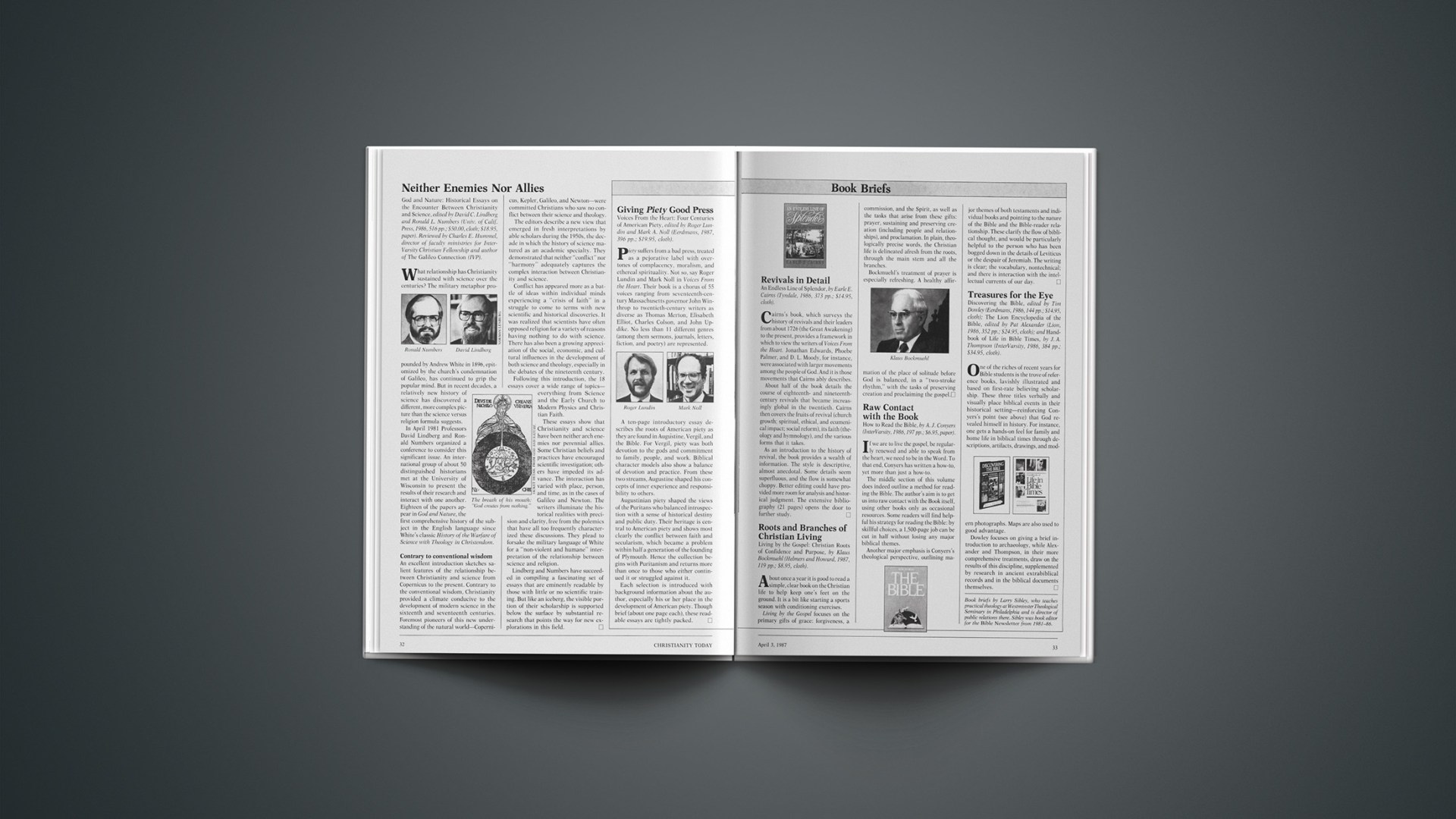Revivals in Detail
An Endless Line of Splendor, by Earle E. Cairns (Tyndale, 1986, 373 pp.; $14.95, cloth).
Cairns’s book, which surveys the history of revivals and their leaders from about 1726 (the Great Awakening) to the present, provides a framework in which to view the writers of Voices From the Heart. Jonathan Edwards, Phoebe Palmer, and D. L. Moody, for instance, were associated with larger movements among the people of God. And it is those movements that Cairns ably describes.
About half of the book details the course of eighteenth-and nineteenth-century revivals that became increasingly global in the twentieth. Cairns then covers the fruits of revival (church growth; spiritual, ethical, and ecumenical impact; social reform), its faith (theology and hymnology), and the various forms that it takes.
As an introduction to the history of revival, the book provides a wealth of information. The style is descriptive, almost anecdotal. Some details seem superfluous, and the flow is somewhat choppy. Better editing could have provided more room for analysis and historical judgment. The extensive bibliography (21 pages) opens the door to further study.
Roots and Branches of Christian Living
Living by the Gospel: Christian Roots of Confidence and Purpose, by Klaus Bockmuehl (Helmers and Howard, 1987, 119 pp.; $8.95, cloth).
About once a year it is good to read a simple, clear book on the Christian life to help keep one’s feet on the ground. It is a bit like starting a sports season with conditioning exercises.
Living by the Gospel focuses on the primary gifts of grace: forgiveness, a commission, and the Spirit, as well as the tasks that arise from these gifts: prayer, sustaining and preserving creation (including people and relationships), and proclamation. In plain, theologically precise words, the Christian life is delineated afresh from the roots, through the main stem and all the branches.
Bockmuehl’s treatment of prayer is especially refreshing. A healthy affirmation of the place of solitude before God is balanced, in a “two-stroke rhythm,” with the tasks of preserving creation and proclaiming the gospel.
Raw Contact with the Book
How to Read the Bible, by A. J. Conyers (InterVarsity, 1986, 197 pp.; $6.95, paper).
If we are to live the gospel, be regularly renewed and able to speak from the heart, we need to be in the Word. To that end, Conyers has written a how-to, yet more than just a how-to.
The middle section of this volume does indeed outline a method for reading the Bible. The author’s aim is to get us into raw contact with the Book itself, using other books only as occasional resources. Some readers will find helpful his strategy for reading the Bible: by skillful choices, a 1,500-page job can be cut in half without losing any major biblical themes.
Another major emphasis is Conyers’s theological perspective, outlining major themes of both testaments and individual books and pointing to the nature of the Bible and the Bible-reader relationship. These clarify the flow of biblical thought, and would be particularly helpful to the person who has been bogged down in the details of Leviticus or the despair of Jeremiah. The writing is clear; the vocabulary, nontechnical; and there is interaction with the intellectual currents of our day.
Treasures for the Eye
Discovering the Bible, edited by Tim Dowley (Eerdmans, 1986, 144 pp.; $14.95, cloth); The Lion Encyclopedia of the Bible, edited by Pat Alexander (Lion, 1986, 352 pp.; $24.95, cloth); and Handbook of Life in Bible Times, by J. A. Thompson (InterVarsity, 1986, 384 pp.; $34.95, cloth).
One of the riches of recent years for Bible students is the trove of reference books, lavishly illustrated and based on first-rate believing scholarship. These three titles verbally and visually place biblical events in their historical setting—reinforcing Conyers’s point (see above) that God revealed himself in history. For instance, one gets a hands-on feel for family and home life in biblical times through descriptions, artifacts, drawings, and modern photographs. Maps are also used to good advantage.
Dowley focuses on giving a brief introduction to archaeology, while Alexander and Thompson, in their more comprehensive treatments, draw on the results of this discipline, supplemented by research in ancient extrabiblical records and in the biblical documents themselves.
Book briefs by Larry Sibley, who teaches practical theology at Westminster Theological Seminary in Philadelphia and is director of public relations there. Sibley was book editor for the Bible Newsletter from 1981–86.










